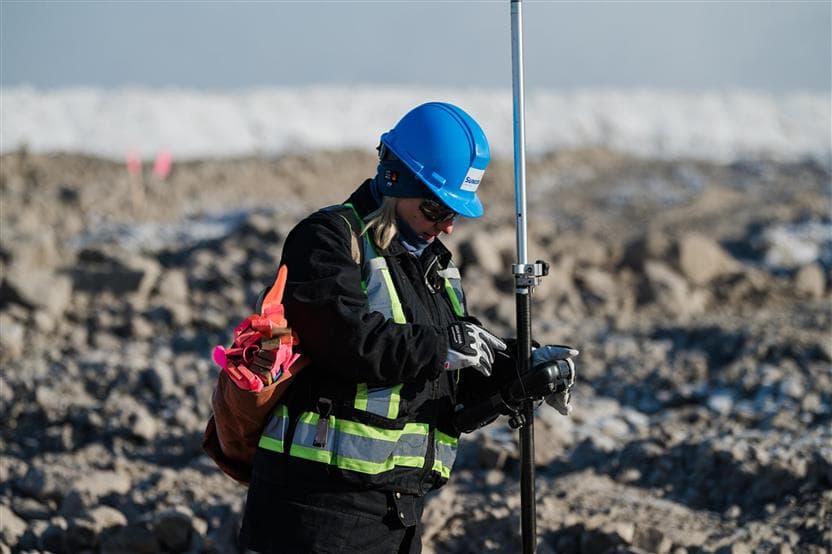We are working to accelerate the pace of progressive reclamation of disturbed land at our mining and in situ locations.
Tailings reclamation technologies
Reclamation is the process of returning lands affected by surface mining activities to a beneficial end use.
Tailings management is an important component of oil sands mining operations. Through research, new technologies and collaboration, we are reducing the size and need of tailings ponds and accelerating the speed of reclamation.
Permanent aquatic storage structure
Built upon our Tailings Reduction Operations (TRO™) process, we have developed a fluid tailings treatment process, called Permanent Aquatic Storage Structure (PASS), that significantly increases the amount of fluid tailings we can sustainably treat.
PASS combines knowledge from our TRO™ process with the application of a treatment technology to improve the quality of the water. The treatment process rapidly frees up water from the fluid tailings so that it is ready for safe release to the environment.
We currently treat more fluid tailings than we produce at Base Plant through our holistic tailings management approach and PASS treatment process.
We are piloting the PASS process at Lake Miwasin, previously known as demonstration pit lake, as part of our closure technology development program designed to ensure we can successfully reclaim mine sites.
Pit lakes: a global mining industry best practice
Lake Miwasin
Lake Miwasin [me-WA-sin], which means ‘nice/beautiful’ in Cree, is part of our aquatic closure program designed to ensure we can successfully reclaim mine sites. It represents a scaled version of the reclamation and closure plan for Base Plant, including uplands, wetlands and a demonstration pit lake (Lake Miwasin) that contains PASS-treated fluid tailings.
Pit lakes are considered a global best practice in mining industries. There are several pit lakes in Alberta created from former coal mine pits that are now used for recreational fishing and swimming.
To date, Lake Miwasin is progressing well in terms of water quality and plant and wildlife in the area. Throughout the Lake Miwasin project, local Indigenous communities have collaborated with us on the research and monitoring.
Base Mine Lake
Pit lakes and connected streams integrate the reclaimed areas to the surrounding environment. Syncrude’s Base Mine Lake is the first commercial-scale demonstration pit lake and utilizes water-capped tailings technology. The technology includes filling the mine pit with fluid tailings, and then capping it with water to form a lake.
An adaptive management approach is being used to steward the lake towards the desired outcomes and is currently focused on removing residual bitumen mats on the tailings surface.
The monitoring and research indicate that tailings are physically isolated beneath the water cap, and the water quality in the cap is improving. We are also seeing a variety of biological communities also developing, including algae, aquatic plants, zooplankton and macroinvertebrates.
We have shared project learnings with other mining operators through the Canada’s Oil Sands Innovation Alliance (COSIA).
Composite tailings (CT) technology
This technology combines fluid tailings with sand and gypsum. When placed in former mined areas, the tailings quickly settle and free up water. The area is then capped with sand and soil, supporting the development of landscapes for forests, wetlands and lakes. The Syncrude Sandhill Fen watershed is being established on top of composite tailings.



.jpg?mw=304&modified=20220921171014&hash=8FD467694C312EAD1B1CBB6AE8AE9DCB)


.jpg?mw=304&modified=20230221213248&hash=A977B81C343C8F5A0E24741FDDB8BF9F)